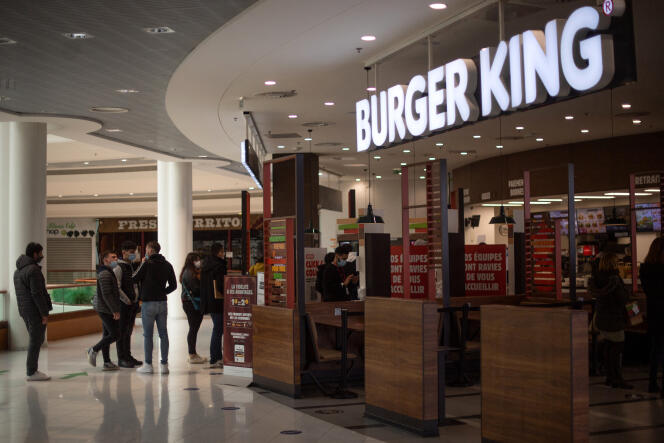


In the heart of the Parisian district of Les Halles, huge donuts have been erected on a white façade with humorous slogans like "Macaron, démission!" (Macaron, resign!) Nour and Chloé, two 21-year-old students, burst out laughing upon discovering them: "It's funny, we love it." The neighborhood is where American chain Krispy Kreme will open its first outlet on December 6. And it's a highly symbolic sign of the times.
"It's going to be a 550-square-meter donut temple," boasted Alexandre Maizoué, the director general of the French subsidiary. Les Halles was not chosen at random: "It's an area with a lot of foot traffic where workers, students and tourists converge: Perfect for fast food." The big American brands − McDonald's, Burger King and KFC − are all present in the district − where Nour and Chloé, like many young people, get together with their friends to "fill up on burgers."
"As places of sociability and epicenters of new eating habits, fast-food restaurants are an ideal laboratory for studying our lifestyles and what has been happening in our cities over the past 40 years," noted Luc Gwiazdzinski, a geographer and urban environment specialist at Toulouse's Ecole Nationale Supérieure d'Architecture.
Fast foods have been part of French culture since the first McDonald's opened in 1972. "Because we're always in a hurry and no longer go home for lunch," said Eric Birlouez, a sociologist specializing in the restaurant industry. From poke bowls and pizzas to tacos and onigiris, these offerings have become increasingly diversified, and much more than junk food.
Despite some inaccuracies − establishments are sometimes incorrectly listed, and their closures are not always recorded − INSEE's Sirene database shows that their number now exceeds that of traditional restaurants in many cities, including Marseille and Nantes, but also in some districts of northern Paris, Seine-Saint-Denis and Val-de-Marne, where median incomes are low.
"In the Ile-de-France region, the priority neighborhoods in terms of urban policy are those where fast-food restaurants play a major role in the food offer," explained Capucine Frouin, who has a Ph.D. in urban planning from Paris-Est Créteil University and works on these issues. But that's not all, she added: "There are also fewer fresh fruit and vegetable shops, and the nutritional environment is less conducive to healthiness." Examples include the Quatre-Chemins district in Pantin (Seine-Saint-Denis), the Cinéastes and La Plaine districts in Epinay-sous-Sénart (Essonne), and Bobigny.
You have 65% of this article left to read. The rest is for subscribers only.
